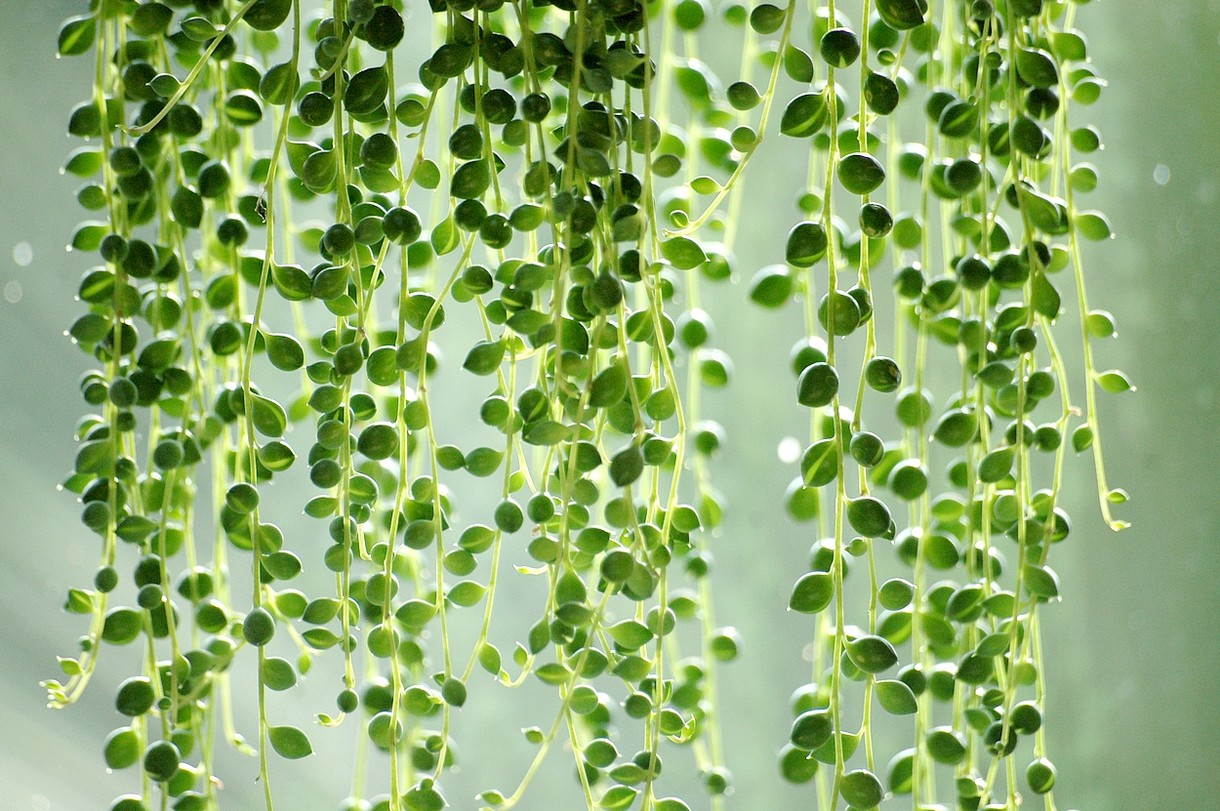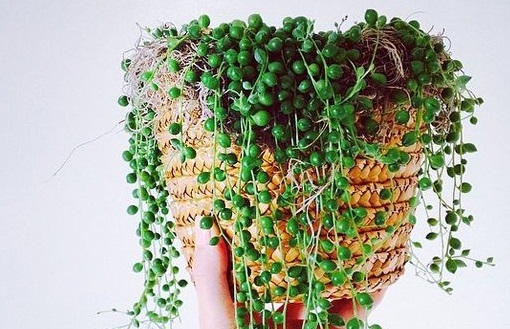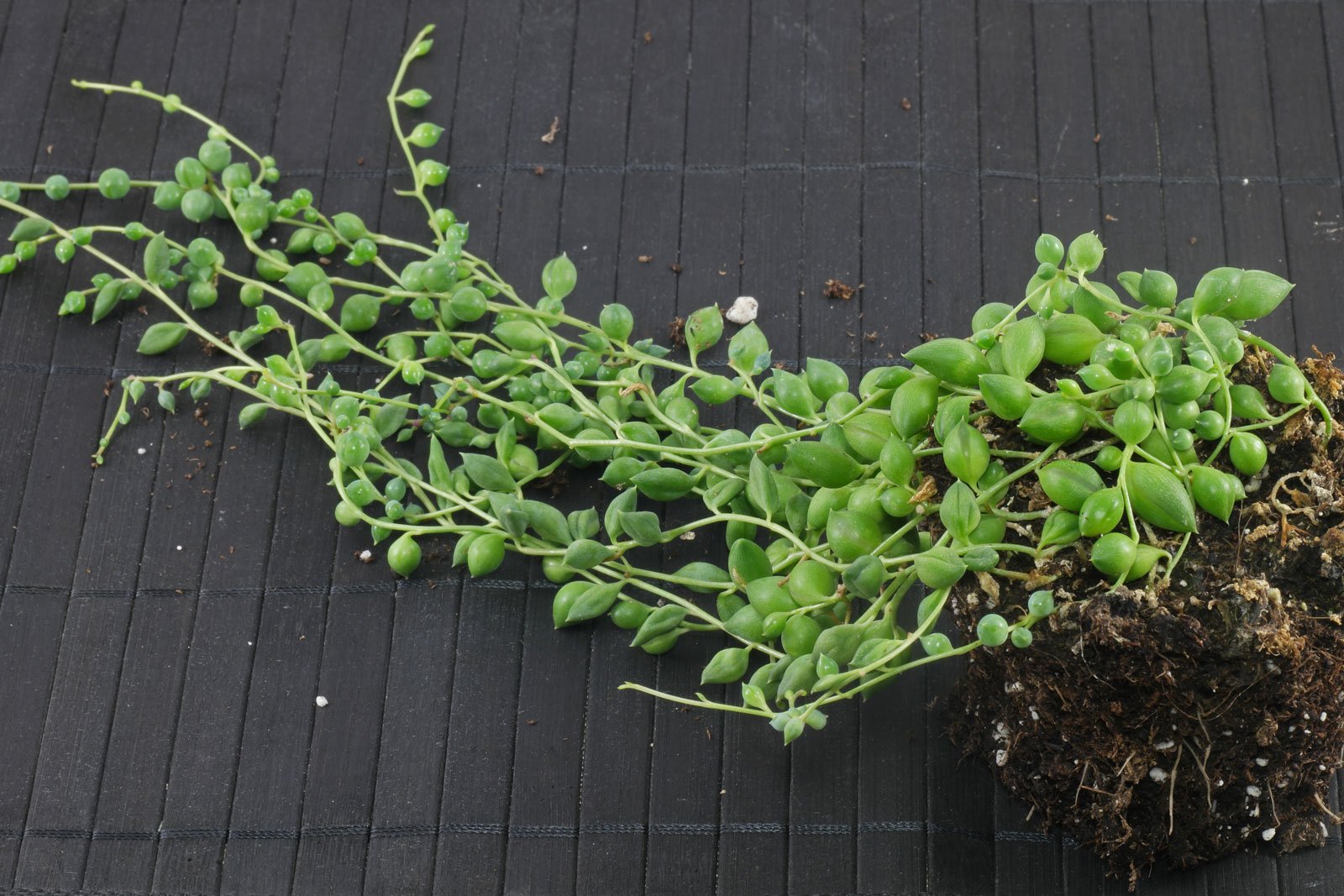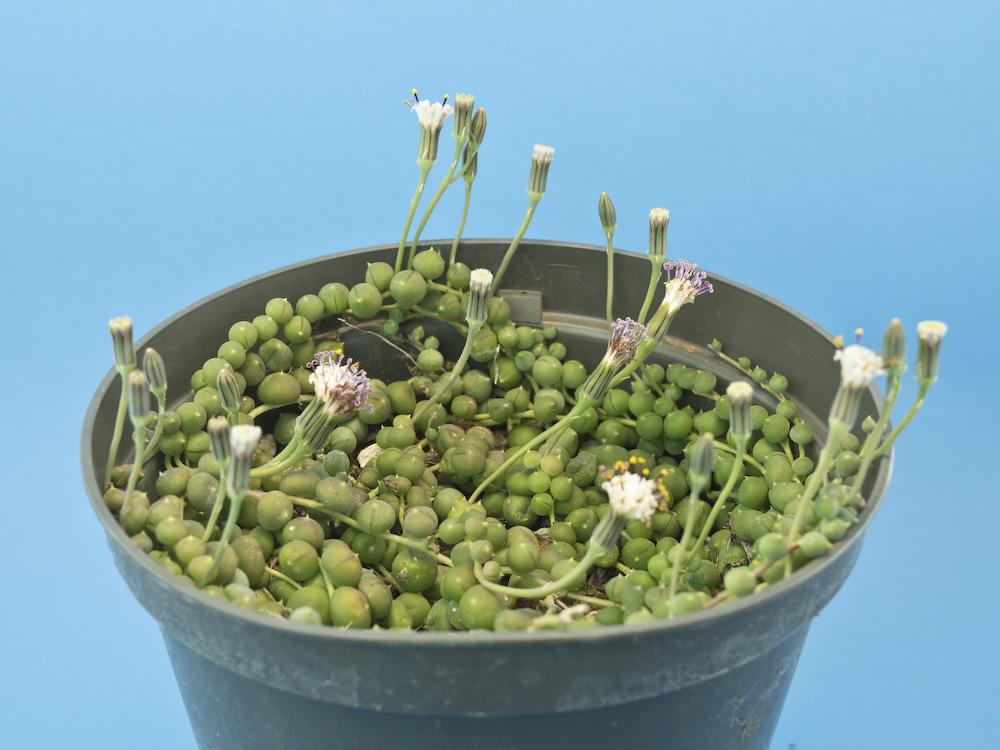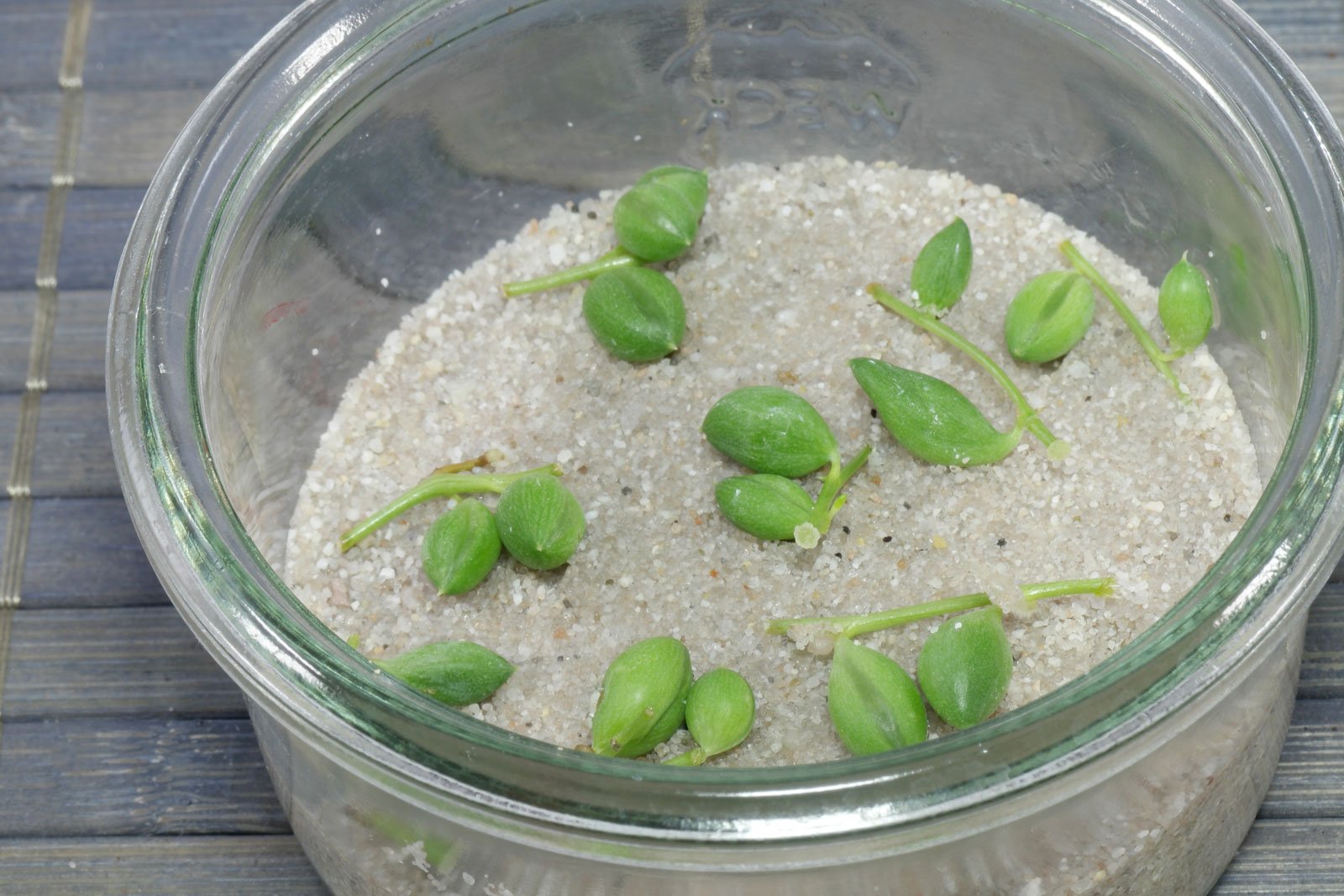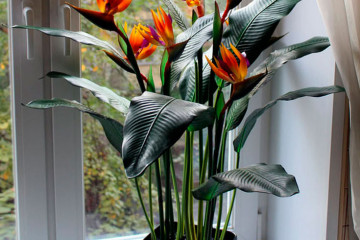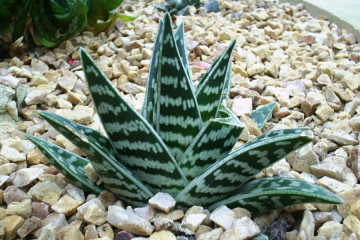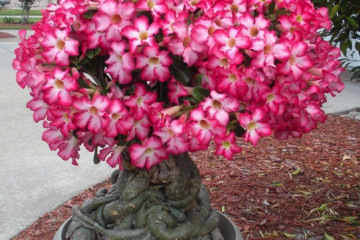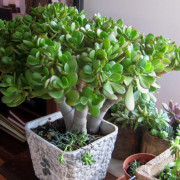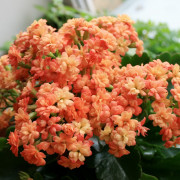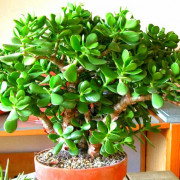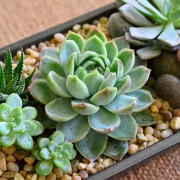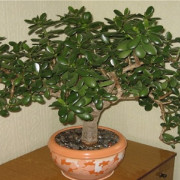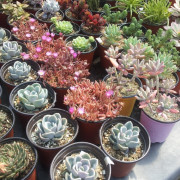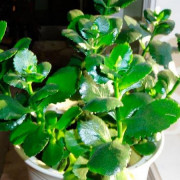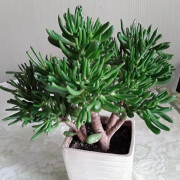Rowley's groundwort Senecio rowleyanus - what a flower
Content:
Succulents have won the love of flower growers due to their unusual appearance and unpretentious care. One of the brightest representatives of this group is Rowley's groundwort (senecio rowleyanus). This flower looks very impressive in the form of an ampelous plant, forming a cascade of emerald beads. It is quite simple to grow a rosemary at home, because it is completely unpretentious.
Rowley's godson
Like all representatives of the Rustic family, the Rowley species belongs to the vast Astrov family. The homeland of the flower is Africa, or rather its mountainous regions. This original succulent definitely deserves attention, because the very structure of the plant is very unusual.
Ragwort shoots are long and thin, covered with spherical leaves. Due to the different sizes of these "balls", one gets the impression of a thread on which green beads are strung. Hence another name for the flower - a string of pearls.
The wild rose blooms with small white-pink flowers in the shape of dandelions, which exude a delicate aroma of cinnamon.
It should be noted that the plant is poisonous. Of course, this does not mean that you should give up growing it at home. One has only to take into account that any manipulations with the flower must be carried out with gloves, and upon completion of them, wash your hands thoroughly. If there are pets or children in the house, their access to the flower must be completely limited.
Rowley's Rustic: Home Care
The unpretentiousness of the flower allows you to grow it in almost any conditions, so it is very easy to care for it. But the grub will fully grow and bloom only if certain rules for care and maintenance are observed.
Illumination and temperature conditions
Rowley's groundwort prefers diffused light and cannot stand direct sunlight. It is better to place the plant on the windowsill of a window facing southwest. The length of daylight hours should be 10-12 hours, therefore, in winter, with a lack of light, you can rearrange the pot to the south side or provide additional lighting artificially.
Optimum temperature indicators for growing a wild rose range between +19 .. + 23 ° С. The flower is able to withstand minor deviations from the temperature regime, both upward and downward. In winter, for the transition to the dormant stage, it is advisable to reduce the indicators by 3-4 ° C.
Watering and humidity
Given the high permeability of the soil, which is necessary for succulents, watering should be carried out regularly, but not abundantly. In the spring-summer period, the soil is moistened 1-2 times a week, and in winter at least once a month.
The groundwort is able to withstand a short drought, since the flower accumulates moisture in the leaves. But do not take advantage of this and skip watering. The plant is very responsive to watering and it needs them for active growth.
Top dressing and soil quality
Fertilization is more of a recommended practice than a must. It is advisable to feed the groundwort in spring and summer, using special fertilizers for succulents. The frequency of top dressing depends on the specific preparation, but as a rule, they are applied every 2 weeks.
It is best to use a special succulent substrate for planting a rose flower, which can be purchased at a garden center. If this is not possible, you can use a mixture of turf, sand and fine gravel in a ratio of 2/1/1.
Planting container size
Like any succulent, Rowley's groundwort has an underdeveloped root system. He does not need a large and spacious pot. It is better to choose a container with a small diameter and medium depth.
Transplant features
There is no need to replant the groundwort annually. But this is only true if the soil has been selected correctly and fertilized regularly. In this case, the transplant is carried out as it grows, which on average is once every 2-3 years.
The transplant is carried out step by step:
- The plant is removed from an old container with a clod of earth.
- Gently free the roots from the remnants of old soil.
- A drainage layer is poured into the bottom of the new pot.
- Fill the container with soil 2/3.
- Place the flower and add the remaining soil.
- Watering is carried out and a thin layer of dry soil is added.
Flowering and dormant period
Rowley's groundwort blooms in late spring or early summer. It is at this time that the plant completely leaves the dormant period. The flowers are small dandelions with milky pink petals. During flowering, you can smell a pleasant aroma reminiscent of the smell of cinnamon.
The main condition for a plant to bloom is to create conditions for it to transition into a dormant period. This implies some changes in the conditions of keeping the flower, namely:
- Decrease in the average daily temperature by 3-4 ° C.
- Reducing the frequency of watering to 1-2 times a month.
- Refusal to apply fertilizers in the winter.
Some experienced growers also recommend reducing the light intensity during the cold season. This technique can be used, but the main thing is not to overdo it, otherwise the flower may partially shed its leaves.
Propagation of the groundwort
Rowley is most often used for propagation by cuttings. You can use both stem and leaf cuttings, but given the shape and size of the leaves of the plant, it is much more convenient to use parts of the stem.
It is quite easy to get a new specimen of a rosemary by rooting stem cuttings. To do this, it is enough to shorten the shoot by 8-10 cm and root this segment on the soil surface.
The very process of rooting a cutting involves just a few steps:
- a flat container is filled with a special soil for succulents, into which 1 part of sand is mixed;
- moisten the soil from a spray bottle;
- several cuttings are placed on the surface of the soil at a short distance from each other.
Further care of the seedlings consists only in periodic moistening of the soil, which is carried out carefully by spraying. The cuttings take root rather quickly and soon start to grow.
It is possible to grow a succulent plant by sowing seeds, but this is a rather long and painstaking process. In addition, it is not always possible to get seeds on your own.
Possible growing problems
Rowley's groundwort is an unpretentious plant. He is sick quite rarely, and pests can damage him only if there are any on neighboring plants. But still, sometimes, when growing a flower, some difficulties may arise.
The most common cause of deterioration in appearance is improper conditions of detention. There are several main mistakes that can lead to a change in the color of the leaves or their structure:
- Insufficient watering leads to the appearance of brown spots on the leaves or their death.
- Too much moisture in the soil or stagnant moisture can provoke the development of root rot, the death of shoots or the appearance of yellow spots on the leaves.
- Lack of sunlight can cause the leaves to become smaller and pale in color.
- Direct sunlight often causes leaf burns, causing them to die or become stained.
In addition, improperly selected soil becomes a dangerous mistake. This can cause several problems at once, such as: lack of nutrients, stagnant moisture or insufficient ventilation of the root system.
Sometimes the flower is affected by pests. Most often these are aphids, spider mites and mealybugs. To combat these parasites, special preparations are used, the use of which should be resorted to immediately.
Rowley's groundwort is a very original representative of the succulent plant world. The ampelous groundwort with graceful shoots and leaves that look like emerald beads can delight anyone. The unpretentiousness of the flower and the simplicity of its reproduction unequivocally speak in favor of the fact that Rowley's groundwort deserves a place in the collection of every grower.
